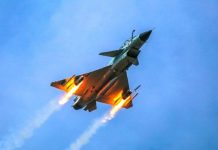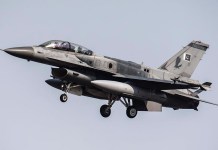On March 7, Belarusian President Alexander Lukashenko announced the arrest of members of a Ukrainian “terrorist group” collaborating with Kyiv’s intelligence services over an alleged plot to destroy a Belarusian airfield.
In a drone strike last month at an airfield close to the Belarusian capital Minsk, anti-government activists in Belarus claimed they had destroyed a highly advanced Russian military surveillance aircraft. Both Moscow and Minsk have refuted this claim.
“The Security Service of Ukraine, the leadership of the CIA, behind closed doors, are carrying out an operation against the Republic of Belarus. A terrorist was trained,” Lukashenko said.
According to Lukashenko, a “small drone” was used in the attack. He claimed that the aircraft only received superficial damage. Lukashenko said a suspect arrested for the attempted attack on the Beriev A-50 surveillance plane is a dual Russian-Ukrainian national.
He stated that while some suspects still hide abroad, over 20 people involved in the incident have been detained. He claimed to have started a nationwide “sweep” to capture more saboteurs responsible for strikes inside the nation.

Lukashenko reiterated that Belarus would not be “dragged into” the conflict. Lukashenko is a close supporter of Russian President Vladimir Putin, who last February permitted Moscow to attack Ukraine using Belarus as a launchpad.
The prospect of a new invasion from Belarusian territory has long been a source of worry for Kyiv, forcing it to maintain border security along its northern border even while its troops are stretched thin fighting Moscow in the south and east.
On February 26, two explosions at the Machulishchi airstrip were reported via the Telegram channel of the Belarusian opposition movement BYPOL (considered an extremist in Belarus).
Following the incident, BYPOL claimed that the plane “definitely wouldn’t fly anywhere.” Two Chinese commercial drones loaded with explosives and striking equipment allegedly carried out the attack.
Later, a video published on social media showed a drone approaching the Russian military Airborne Warning And Control System (AWACS) plane.
On March 1, the Belarusian Ministry of Defense published a video showing a fully operational A-50 but did not specify when it was recorded. Similarly, Yury Ambrazevich, the deputy foreign minister of Belarus, said that the information regarding the attack was “false.”
Russia’s A-50 Planes In Ukraine War
The four-engine, jet-powered A-50, is Russia’s answer to the E-3, the primary AEW aircraft of the United States.
The top-mounted radome of the A-50 houses a rotating radar that sweeps 360 degrees and can locate aircraft up to 250 miles away. An A-50’s 15-person crew keeps tabs on adversary aircraft while coordinating friendly aircraft movements.
There are only nine A-50Ms and modified A-50Us in the Russian air force, along with 14 Ilyushin Il-20s that can also serve as airborne command posts. The A-50s regularly operate from bases in Belarus and southern Russia for flights near eastern and southern Ukraine.
Researchers Justin Bronk, Nick Reynolds, and Jack Watling wrote in a study for the Royal United Services Institute in London, noted that the A-50s conducted an average of two to three sorties per day when Russia began its conflict with Ukraine in February 2022, delivering higher-resolution early warning and vector data on low-flying Ukrainian aircraft in specific sectors.

The Mikoyan MiG-31 and Sukhoi Su-35 interceptors of the Russian air force have been able to launch super-long-range air-to-air missiles at Ukrainian jets with the aid of the A-50s’ tracks.
The Ukrainians lack equipment similar to the A-50 aircraft. However, it has been claimed that the A-50’s radar can be jammed.
RUSI researchers noted that the A-50 is relatively simple to degrade with an electronic attack, and Ukrainian forces consistently succeed. Sometimes, the Russians themselves downgrade their A-50s, the RUSI report noted.
Surveillance information is often not immediately transmitted between A-50M and fighters since the Russian air operation is subservient to the ground troops.
Instead, information is typically transmitted through a combined arms army or military district command post, directly or via an Il-20M relay aircraft. This considerably slows down the data transfer rate, analysts said.
The plane has nonetheless proven instrumental in the conflict, making it a vital target for Ukrainian forces.
- Contact the author at ashishmichel(at)gmail.com
- Follow EurAsian Times on Google News




